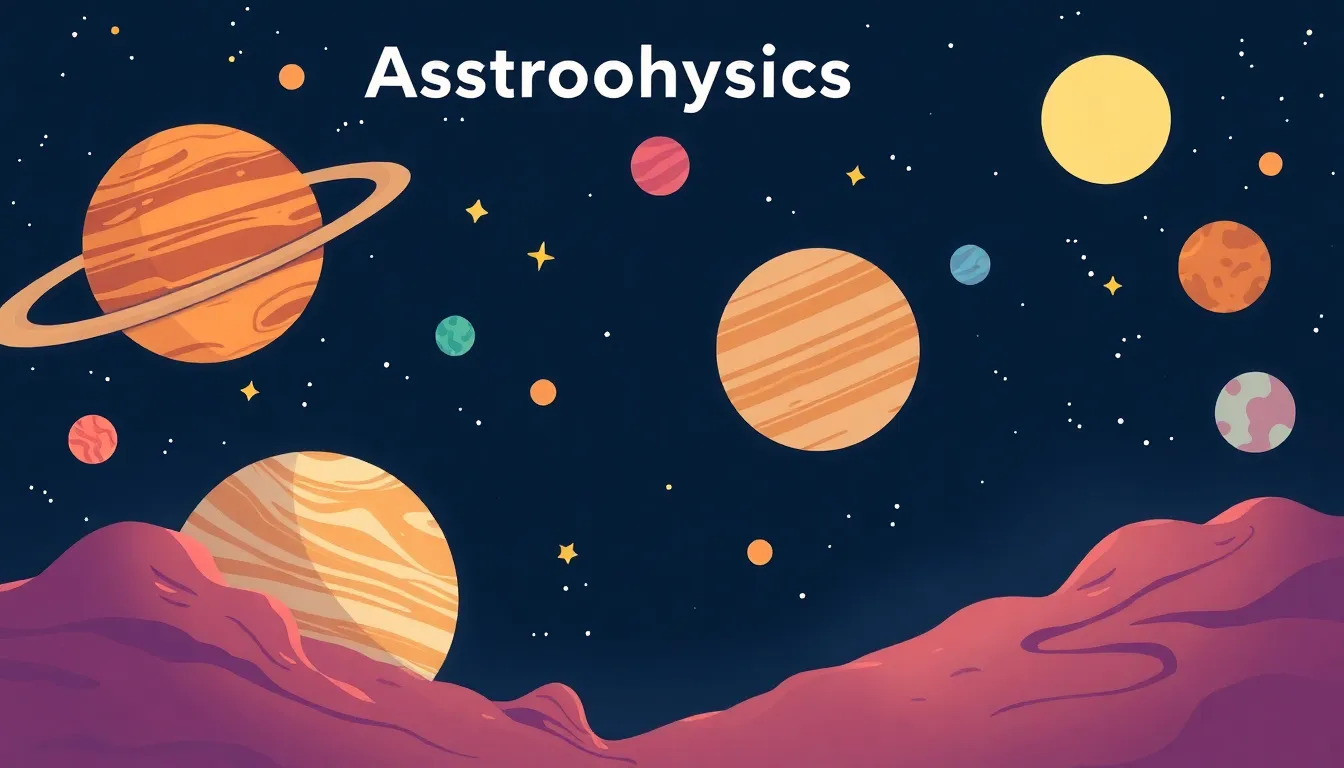
Astrophysics Basics
What Is Astrophysics?
Astrophysics is the science that tries to explain how the universe works.
It looks at things that are far away, like stars, planets, and galaxies, and asks questions such as:
- How Are Stars Born?
- Why Do Planets Orbit The Sun?
- What Makes A Black Hole So Strong?
Scientists called astrophysicists use math, physics, and observations to find answers.
Even though the objects they study are millions or billions of miles away, the same rules that work on Earth also work out in space.
Stars, Planets, and Galaxies
Stars
Stars are giant balls of hot gas.
They shine because nuclear reactions inside turn hydrogen into helium, releasing huge amounts of energy.
Our Sun is a typical star, and it gives Earth the light and heat we need to live.
Planets
Planets are smaller than stars and do not make their own light.
They orbit stars and can be rocky, like Earth and Mars, or gassy, like Jupiter and Saturn.
Some planets have moons that circle around them, just as our Moon circles Earth.
Galaxies
A galaxy is a huge collection of stars, gas, dust, and dark matter held together by gravity.
The Milky Way is the galaxy we live in; it contains billions of stars.
Galaxies can have different shapes: spiral (like a pinwheel), elliptical (rounded), or irregular (no clear shape).
How Scientists Study Space
Telescopes
Telescopes collect light from distant objects and make them appear brighter.
Ground‑based telescopes sit on mountains, while space telescopes orbit Earth, far from the atmosphere that can blur images.
Space Probes
Probes are unmanned spacecraft that travel to other planets or moons.
They carry cameras, sensors, and sometimes even tiny labs to test soil or atmosphere.
Examples include the Voyager probes that have left our solar system and the Mars rovers that explore the Red Planet.
Computer Models
Because we cannot touch most of the universe, scientists use computers to create models.
These models simulate how stars explode, how galaxies form, or how black holes bend space and time.
By comparing model predictions with real observations, astrophysicists learn what is true.
Astrophysics helps us understand the big picture of the cosmos.
It shows that the same physical laws that make a ball roll on the playground also shape the motion of planets and the life cycles of stars.
Who knows? Maybe one day you’ll become an astrophysicist and discover something new about the universe!